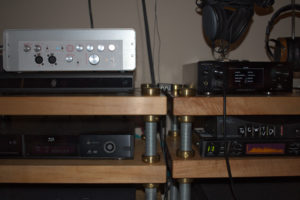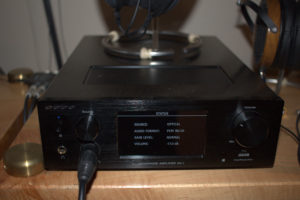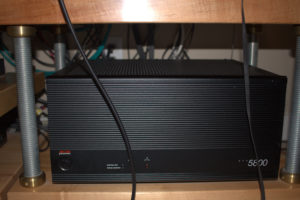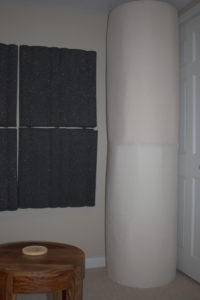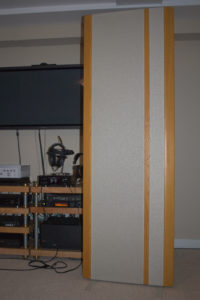This is part 2 of an 8 part series comparing the Meier Corda Soul and Oppo HA-1. Click here for the introduction.
Before diving into the listening sessions, let me summarize a few things:
Overview
- Both have DAC, preamp and headphone amp.
- Both operate natively in balanced differential mode.
- Technically speaking, the terms “balanced” and “differential” are two different things–often, but not always, used together.
- Here, I use the word “balanced” to mean both, as is commonly done in audio circles.
- Both have digital inputs (toslink, coax, USB) and analog outputs.
- Both are well engineered and built.
Functional Differences: Summary
- The Soul has DSP features; Oppo doesn’t.
- The Oppo has additional inputs and outputs that the Soul doesn’t have.
Functional Differences: Details
- Oppo also has unbalanced inputs and outputs (line level & headphone); Soul doesn’t.
- The Oppo’s internal signal path is balanced.
- Its unbalanced inputs and outputs go through an extra conversion.
- This is completely internal and automatic: just plug it in.
- Soul has multiple digital inputs (3 toslink, 3 coax), Oppo has only 1 each.
- Soul has DSP: selectable DA reconstruction filter, L-R balance, EQ, channel mixing. Oppo doesn’t.
- Soul has digital output (to use its DSP with another DA converter), Oppo doesn’t (it doesn’t have any DSP effects to do this with).
- Soul has a high (120 Ohm) impedance headphone output — in addition to a standard low (< 1 Ohm) impedance output. Jan describes the reason here. Summary:
- The low Z output is normally used with most headphones, especially high impedance and planar magnetics.
- The high Z output can dampen oscillation (e.g. tame a “hot” response) for certain headphones having low impedance.
- Soul has a ground lift switch. You shouldn’t need it but it’s nice to have. Oppo doesn’t have one.
- Soul has switchable high/low gain for its analog input. Oppo has switchable high/low gain for its headphone output, which applies in the final analog stage to all inputs both analog & digital.
- Soul is custom built gear and Jan will make whatever individual adjustments you want to your unit: changing the analog gain, custom DSP, whatever. Just ask him!
- Oppo has Bluetooth input, Soul doesn’t.
- Oppo has AES/EBU digital input, Soul doesn’t.
- Oppo has mobile USB input (Apple only), Soul doesn’t.
- Oppo USB input accepts PCM and DSD, Soul is PCM only.
- The Soul handles the following sampling freqs: 32, 44.1, 48, 88.2, 96, 192.
- Oppo handles a few sampling frequencies that Soul doesn’t: 176.4, 352.8 and 384.
- These aren’t used much, but if you have a source using them, Jan recommends resampling them to a frequency the Soul handles. This can be done in software on a PC. Just make sure you use good software that converts properly in 24 bit or greater with frequency-shaped dither.
Functional Differences I care about
- Unbalanced analog inputs and outputs are nice to have (though not essential).
- An unbalanced headphone output is nice to have (though not essential).
- Channel mixing crossfeed is nice to have when headphone listening to recordings having absolute L-R separation (though not essential).
- Because this feature slightly changes tonal balance and resolution, I use it only when hard channel separation is annoying.
Other Equipment
- Disc player: Oppo BDP-83 playing CDs and DVD-Audio, using Toslink and Coax PCM output direct to preamp (Soul or Oppo). Varying bit rates from 44-16 to 192-24.
- Headphones
- Audeze LCD-2 Fazor, version 2016 upgraded drivers
- Sennheiser HD-580 with fresh ear & headband pads
- Speakers
- Adcom 5800 amp
- Magnepan 3.6/R speakers
- Tuned listening room (floor to ceiling tube traps, acoustic foam, etc.)
- EQ: Behringer DEQ-2496
- Not always used; details below
The equipment with electrons flowing through it.
The Oppo looking all shiny & black (hard to believe it’s had 4 years of regular duty).
The Adcom 5800 pushes the electrons through my Magnepans. Hard to believe it’s over 25 years old, still going strong (I have it tested every few years).
It’s amazing how 21″ diameter floor-to-ceiling tube traps clean up the bass response (yes they’re home built)! The dark stuff on the wall is 4-layers thick of RPG acoustic foam strategically located to clean up the midrange response.
These Magnepan 3.6/R have given me over 15 years of musical enjoyment. Being dipoles, they are very sensitive to room setup, but when set up right they are downright magical. With the room treatment and positional setup, at the listener position they measure within 3 dB of flat from 30 Hz to 20 kHz. I love their midrange voicing, so natural and free of resonances; with extended and detailed yet silky smooth treble, distortion lower than most headphones, and bass having the taughtness, control and timbral accuracy that is unique to planar magnetics.
Listening Configuration
- All Soul DSP features disabled and standard linear phase sinc(t) AA filter used, except where noted.
- I normally use a Behringer DEQ 24-96 for mild parametric EQ to correct headphone & speaker room response.
- When using LCD2, I listened both with, and without, EQ. The mild EQ I use (+3 dB @ 4500 Hz, Q=0.67) partially corrects the LCD2 response dip and makes it more neutral and resolving.
- When using speakers, I disabled EQ. The room treatments give good clean response making the speaker EQ mild and unnecessary for critical listening comparisons.
- Both Oppo & Soul left ON all week to ensure they were fully warmed up and stabilized.
- The Adcom 5800 powered off at night (it draws 250 W idle), but on for at least 30 minutes before each listening session–long enough for the fans to be running.
- Headphones: the Soul’s low Z output; the Oppo’s balanced output.
- Speakers: the Soul’s XLR output to Adcom 5800; the Oppo’s unbalanced output to Adcom 5800.
- This slightly favors the Soul, because the Oppo is internally balanced so the unbalanced output goes through an additional conversion. Its balanced output has slightly better specs than unbalanced.
- While imperfect, this allows faster switching (no need to plug/unplug analog cables).
- I figured it was probably fair enough because the cables are short (1 meter), high quality (Blue Jeans Cable), and both the Adcom and Oppo have excellent measurements for both inputs, single-ended and balanced.
- I changed this later (described in notes) and found the Oppo’s balanced outputs sound slightly better.
- Level matching
- All comparisons level matched within ½ dB.
- White noise, equal energy all frequencies, used for level matching.
- Matching done subjectively by ear, then confirmed and fine tuned with an SPL meter.
Observed Soul notes not primarily listening related
- Soul occasionally emits a “click” to the analog outputs (speakers or headphones). Not a huge “orgre slurping breakfast” click that could damage speakers, just a light to medium volume audible click.
- After no music input for a few seconds.
- Occasionally when starting to play a new disc.
- Occasionally when hitting play after the disc was stopped for a while.
- Seems to be a minor bug in the Soul firmware/software.
- NOTE: if it implements a volume fade-in to avoid the click, it would have to be very fast (say, 30 ms) to avoid clipping some tracks that start immediately.
- Soul’s volume knob
- A better design
- No potentiometers in signal path
- Changes gain rather than attenuating fixed gain
- But those relays are physically loud! Not in the output signal, but a mechanical clicking noise in the room.
- Are the relays this loud on the production version?
- The volume control relays on my Corda Jazz are much quieter.
- Jan says: production unit has same relays, but the box is more solid and damps the sound
- How long do these relays last (relay life in terms of MTBF/MCBF)?
- Jan says: veeery long, been using them for years and yet to replace one.
- Output profile
- About 0.5 dB / click (from 10:00 to 3:00)
- About -15 dB from full scale at 12:00 (click 31)
- Larger steps per click for the first 15 or so clicks.
- Not remote controllable; confirm that the production version is?
- Jan says: confirmed
- A better design
NOTE: my setup is a bit unusual, in that my speakers in combination with the carefully tuned listening room are higher resolution than most headphones. Normally, good headphones are more resolving than good speakers. So my observations and conclusions may also be a bit unusual.
Next: subjective listening notes, part 3 (days 1 & 2)
